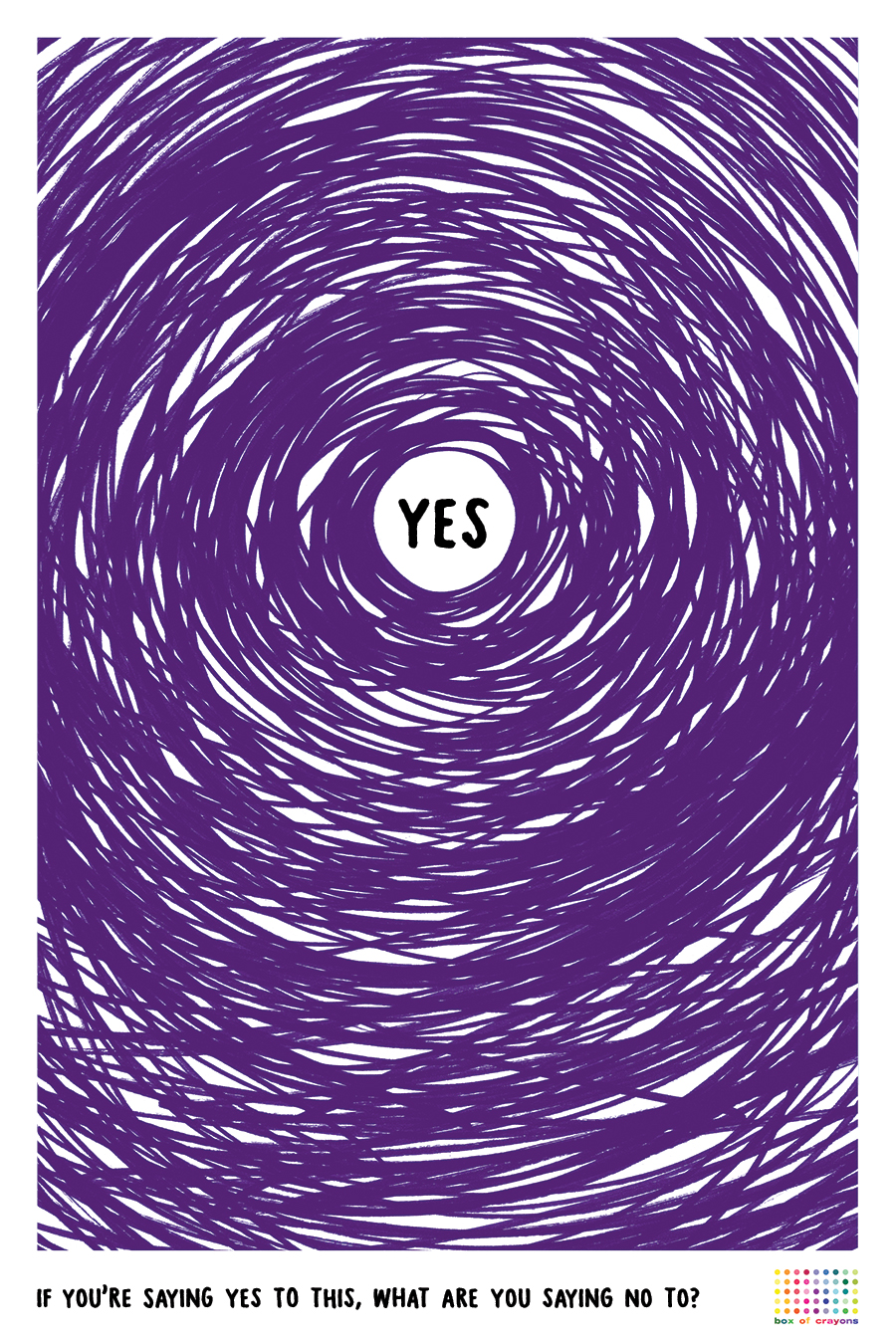7. Ask for help and make it easy
I’ve been doing the Great Work Podcast for a long time. Throughout its six years, we’ve interviewed more than 350 cool, smart, savvy, and often influential people. Many of them are writers of business books.
You probably understand the concept of reciprocity, the primary idea from Robert Cialdini’s seminal book Influence. (Here I am talking to him about it.) If you give, people will want to give back. I hadn’t been doing six years of interviewing just to build up reciprocity. But at the same time, I was going to ask for help.
Our goal was for the people to whom we reached out to feel no sense of obligation or expectation. But if they felt so moved, we would be grateful for their help. And many people did. Some jumped on Twitter, some talked about us on their blogs, some sent out news via email. We made it as easy as possible for those who wanted to help us, offering ways to talk about the book. We got A LOT of positive feedback from these resources:
Requirements: Thinking hard about what would be most useful for writers and interviewers, and what would most effectively remove any possible barriers to them engaging with the book.
Cost: The time and effort to craft something useful for writers and interviewers, rather than the usual rubbish PR releases that are written as if anyone cares that another book has been launched into the world.
8. Target summary hubs
There are a few go-to resources for people looking for summaries of business books:
For the first two, our Page Two team worked relentlessly to get them to notice us and then champion us through persistent follow up. (Seriously, Woody Allen had it right when he said that “80 percent of success is just showing up”). We had great success in particular with getAbstract, and The Coaching Habit ended up being its #2 business-book download for 2016.
When we found out we were #2, we reached out to the getAbstract team, and we’re currently planning some co-marketing of the book together, including an author dinner in various cities. (Thanks Georg, Patricia, Gregg, and Julia!)
Soundview elected not to do a summary of the book but did host a webinar.
With the final two, we’d already built a relationship with the founders of both of these organizations, so we were able to rely on our friendship to have them promote the book. They both offer a great service and have an engaged community of readers, and they definitely helped us get noticed.
Requirements: Identify potential hubs for people finding out about your book. Pitch them. Pitch them again when they don’t respond to your first pitch.
Costs: $0
9. Run a BookBub campaign
BookBub is a service that promotes discounted ebooks to a large, segmented email list. It does a lot of fiction, but there’s a place for nonfiction books as well.
Because we self-published, we knew we had full autonomy over discounting the ebook version of The Coaching Habit. So we threw our hat into the ring and, to our delight, made the cut. (BookBub picks less than 10 percent of applicants, so it’s lovely when you get the thumbs-up.)
We decided to double down on this. We did some research (i.e., we Googled “How do you run a good BookBub campaign?”) and ended up applying to other sites that did a similar thing to BookBub: Books Butterfly, Genre Pulse, World Lit Cafe, Kindle Nation Daily. We also invested in a mail-out with the SelfGrowth.com mailing list, which is about 200,000 people strong (or so it says).
This was a fantastic success. We hit #1 business book on Amazon, which was thrilling. And then about a week later, I woke up to find that we’d hit #3 on the Wall Street Journal list for nonfiction ebooks. We’d sold close to 10,000 copies of the book in that week, and it had nudged us On To A List.
Requirement: Strong application to BookBub (it accepts only about 10 percent of applicants), plus some good luck to get selected. The courage to double down on the opportunity and find ways to amplify the promotion.
Cost: $250 for BookBub + about $300 for other services like BookBub, announcing the discount + $1,500 for mailing out to SelfGrowth.com list.
10. Ask for Amazon reviews
So, a problem with my big picture goal: how do you define a classic? It’s hard to pin down. It’s elusive, it’s got a certain je ne sais quoi.
But there is one way to measure success: Amazon ratings. I know there’s not a direct correlation, but when I look at books I consider business classics, they’ve all got over 1,000 Amazon reviews — 1,000! That’s A LOT of reviews.
But as a team, we set ourselves a goal: 1,000 reviews within a year. It turns out there’s no way to get there fast without just plain asking people.
When people reached out to me on LinkedIn or Twitter, saying they liked the book, I thanked them … and asked if they’d consider writing a review.
I also added an automatic PS signature on my email:
Later on, we added a page right in the middle of the book which also asked for people’s help. (This, by the way, is another one of the big bonuses for self-publishing. You’d be pretty lucky to get a regular publisher to let you do this.)

(Turns out that not everyone is impressed by this:)
The quest for Amazon reviews has been a very successful failure. We got halfway there. More than 500 reviews! Amazing. And we’ll keep pushing hard to get to 1,000.
(Ahem. Got a copy of the book? If you’re feeling kind, click through and give it a rating on Amazon.)
Requirements: Shamelessly asking people to consider adding a review on Amazon. See the three examples in this very article.
Costs: $0
11. Get airport distribution
If your audience isn’t the business traveler, I suggest skipping this step.
The final strategy that was particularly important to us was getting into airport bookstores. I was hoping that would sell books, sure. But more importantly, I wanted ours to be a book that would catch the eye of potential clients of our coaching programs — typically VPs of HR, or VPs of Learning & Development. These are the kind of people that make a living in airport gates the world over. It was a brand-building and new-business move more than it was a bookselling move.
The starting point was to create a book that was airport-friendly. The size (small enough to fit in a purse), the design (lots of white space — appealing if you picked up the book and flicked through it — rather than an intimidating block of text), the length (my goal was to write the shortest book I could that was still useful; it came in at about 25,000 words) all emerged in part because I knew I wanted it to work in airports.
The next step was to have our distributors, Greenleaf in the United States and Georgetown in Canada, pitch the airports. Both were successful, though not quite as fully as I’d hoped — quite frankly, it’s been killing me that we couldn’t get the book into my hometown’s airport. We committed initially to a three-month block (March through May) and sold about 2,000 copies in that time.
The cost is about $3k – $4k per month, so it’s something of a “loss leader” for us. Because we also generated a number of inquiries about our programs from airport sales, it’s worth having the books out there to catch the eye of potential buyers of our training programs.
Requirements: Having a relationship with a distributor who’s willing to pitch you to the airports. Having a book that’s airport-friendly.
Cost: The initial relationship with a distributor will cost in the $2K to $5K range, and the distributor will also take roughly 40 percent of every sale it facilitates. The additional cost for an airport listing (with the book not necessarily showing up on one of the front tables, which costs extra) is between $3K and $4K per month.
The ideas I tried that didn’t work
1. Hiring a PR agency
Ask any author and they’ll tell you what a disappointment PR has been for them. I’d experience that with Do More Great Work, where the PR support I got was random three-minute radio interviews with confused radio DJs who hadn’t read the book and didn’t care.
I was determined not to waste money on this. Until I weakened. FOMO? Perhaps. But I hired a PR person for $3,000 and got the predictably disappointing results. One morning TV show in Toronto (glamorous, but I’m pretty sure none of my target market watches TV at 9:30 a.m.) and a few radio and podcast interviews. One of my most expensive efforts with the least results. Pass.
Cost: $3,000
2. The Twitter Thunderclap
Thunderclap is a clever way to coordinate your social media bang. The idea is that you ask people to sign up to support your campaign — in our case, the book launch on February 29. What then happens is that a message created by you gets sent out at the same time to everyone’s Twitter account. A mighty thunderclap of social media, echoing around the world!
We had a bunch of generous people sign up — 223, with a social reach of 589,000 — and we Thunderclapped on February 29. And it didn’t seem to make much difference. On reflection, I realize now that it gave people a very low commitment option to support the launch. People who might otherwise have mentioned us on Facebook or on their blog or (the best option) to their email list quite reasonably took the easiest way out.
Cost: $0
3. Book-launch bonuses
As part of the launch week, we offered bonuses to people willing to bulk-buy the book.
My vision was that hundreds of teams and organizations would buy copies of the book, I’d deliver one workshop and some webinars, and that potentially we could talk to the others about coming in to deliver paid workshops for them. In other words, a clever way to start some sales conversations while also selling loads of books.
What did work was the PDF giveaway for a single purchase. I know people appreciated that, and I think it was a quick, easy win that encouraged people to buy the book.
What didn’t work were the more elaborate giveaways. As it happened, only four organizations bought more than 98 books (and a big thank-you to them!), and none of them turned into Box of Crayons clients. And we failed to make the most of Lee Crutchley’s fantastic postcards that we commissioned for this purpose.
Cost: A day of my time to run the workshop; three 60-minute slots to run three webinars; $5,000 + printing costs for the postcards.
(Here are two of those awesome postcard designs:)


4. Giving the book away in bulk
One maverick publisher I spoke to (who asked to remain anonymous) said that part of the success he’d had with his bestselling book was due to his commitment to give it away. In fact, he said that in the seven years since first publishing the book, he’d given away more than 50,000 copies, to targeted conferences, to online communities and so on.
I thought I’d try that and so set up a PDF download on Gumroad so that I could offer free and very inexpensive versions of the book. I was speaking at the big ATD conference (North America’s biggest conference for training and development, with more than 10,000 attendees) and paid $5,000 to put a flyer in every attendee’s swag bag, offering a copy of the book. I actually split-tested this: 6,000 of the flyers offered the book for free, and 4,000 offered it for 99¢. Part of the genius of this idea was that the front page of the download asks people to consider giving the book a review on Amazon, so in my imagination, we’d give away a ton of books, resulting in many reviews on Amazon (hello, target of 1,000!) and maybe even some sales inquiries about our programs.
Turns out people don’t read flyers in the swag bag. We had a little more than 100 or so people download the book, equally split between paid and free. And none that I know of turned into clients for Box of Crayons.
I do think there’s something very smart about giving the book away, particularly if your goal (like mine was) is to have it considered a classic. And if, like me, you’ve got a way of earning money that the book helps promote. But I haven’t really figured it out just yet.
Cost: $5,000
[There’s also a ton of ideas I considered and then rejected. You can read those here.]
Part V: Closing thoughts: No one really knows what they’re doing
It can be a scary thing to write a book. First you have to endure the blood, sweat, and tears of actually writing it. That’s hard enough. And then you’ve got to figure out how to sell it in a world where content is free, ubiquitous, and very, very noisy. There are many points for possible failure.
A majority of authors (the New York Times suggested it was 70 percent) don’t earn back their advances, which means the book sold less than the publisher thought it would. And the rest of us are all making it up as best we can, hoping that something sticks.
That’s both depressing and liberating. Liberating because it means you can figure out what you want to do. Things I talk about above may or may not work for you. I encourage you to try to do a few things well, rather than a hundred things half-heartedly. I encourage you to build “a tribe” of people who know you and admire your work, so they’re already fans. I encourage you to have some fun. Oh, and I encourage you, if you’re feeling kind, to write a short review on Amazon of The Coaching Habit.



